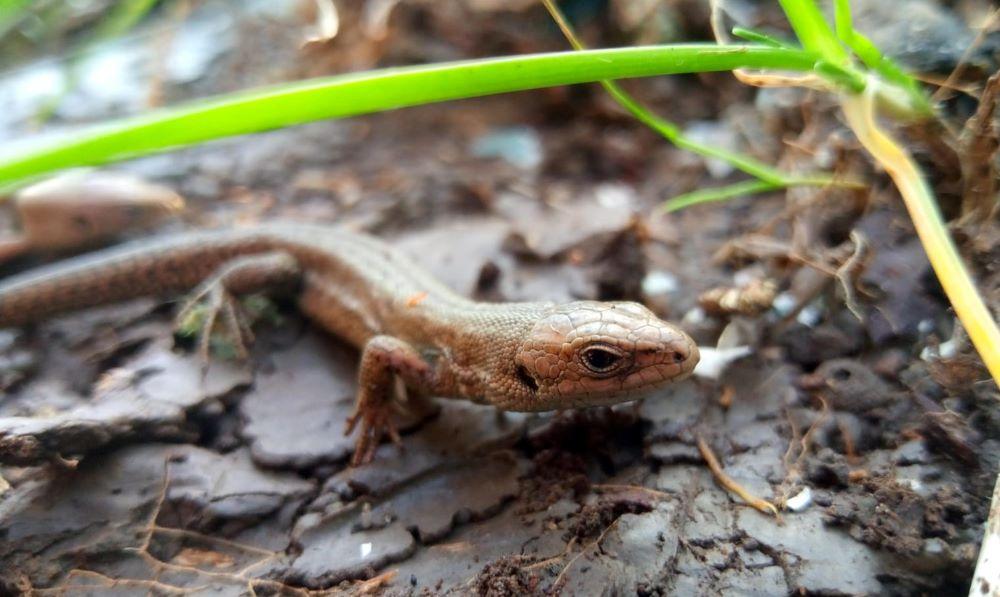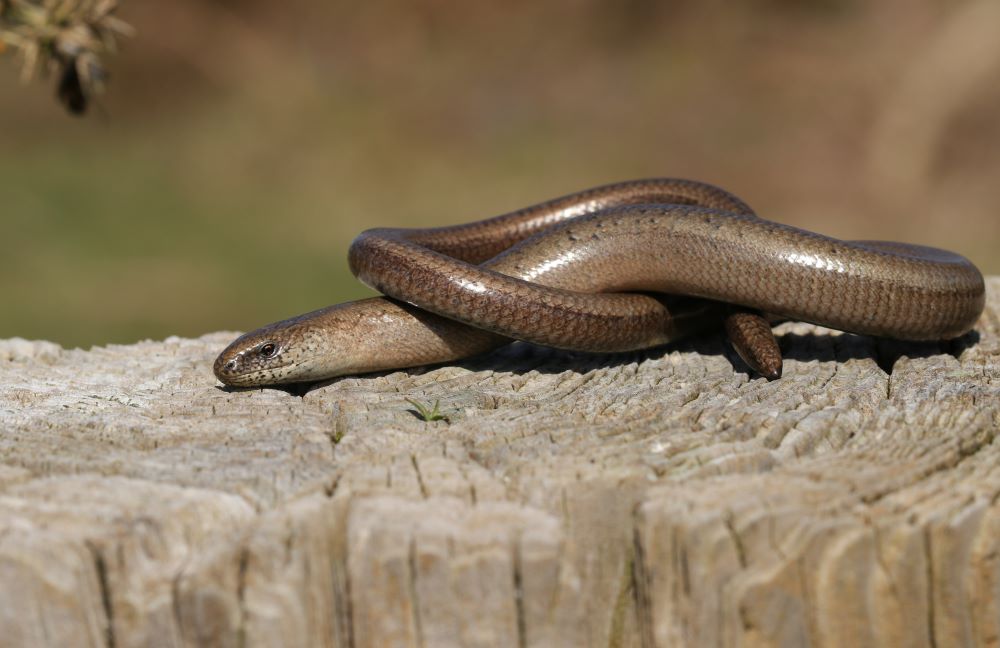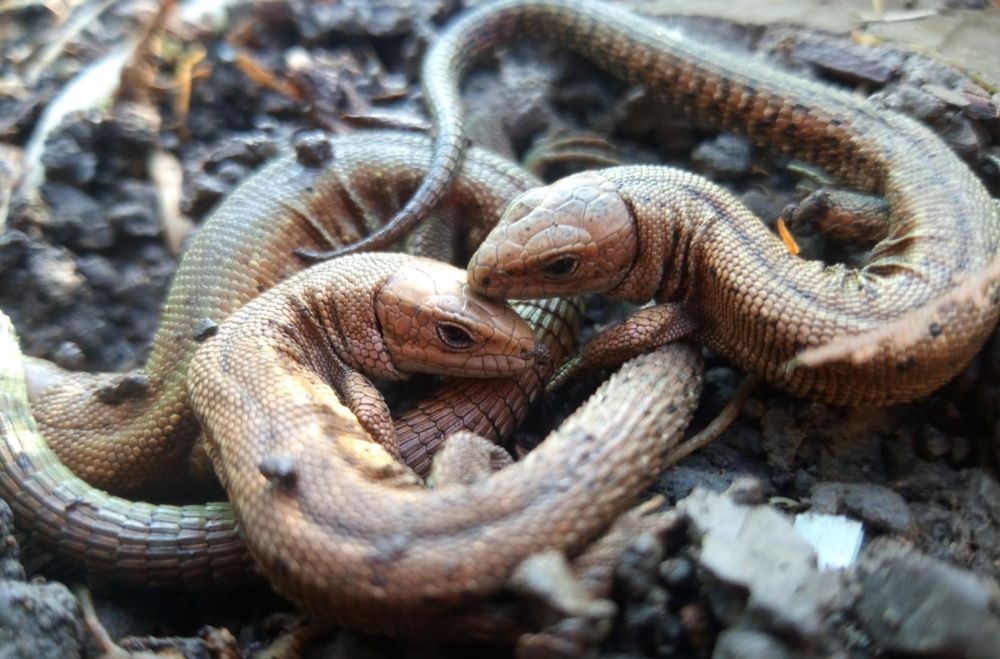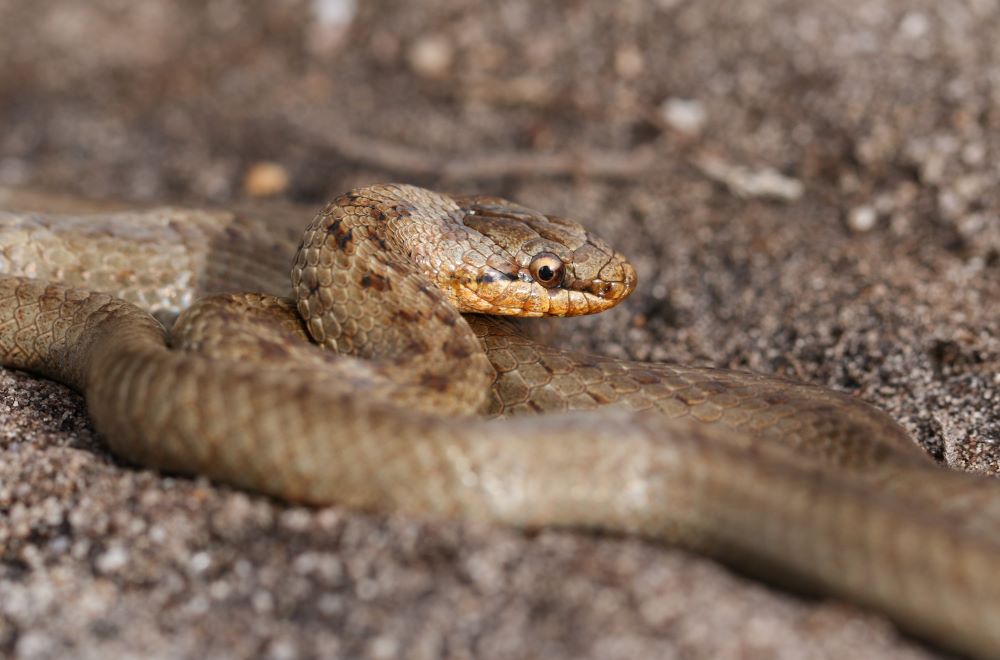
Reptiles in the Forest
We are creating a Forest where a wide variety of wildlife can thrive, including reptiles. There are six reptile species that are native to the UK, three of which have been confirmed in the Forest through surveys and sightings over the past few years. All of them are UK Biodiversity Action Plan priority species meaning they have been identified as being the most threatened and require conservation action.
Find out more about these species and where they have been spotted in the mosaic of habitats found in the Forest.
Confirmed reptile species in the Forest
Grass snake

The grass snake is one of the UK’s longest snakes and one of the 3 confirmed reptile species in the Forest! We have recorded them from Coughton to Dorsington.
The grass snake feeds on amphibians so is most common in places near to ponds as well as areas of marshy grassland, fen, and swamps. This beauty can be spotted basking in the sun when it comes out of hibernation between April and October. It is usually greenish in colour with a yellow and black collar, pale belly, and dark marking down the sides.
Females lay between 10 to 40 eggs in rotting vegetation, such as compost heaps, and incubate them until they hatch in early autumn.
The British population of grass snakes belongs to the distinct subspecies, Natrix natrix helvetica, but research published in 2017 proposed it should be elevated to full species status and given the name barred grass snake (Natrix helvetica).
When threatened by one of its many predators – including badgers, red foxes, domestic cats, hedgehogs, and various birds - it often ‘plays dead’, perhaps trying to make itself less appealing to eat. If caught, the snakes hiss and release a foul-smelling substance.
Slow worm

Despite its appearance, the slow-worm is not a worm, nor is it a snake; it is a legless lizard! Its identity is given away by its abilities to drop its tail to escape if caught by a predator and blink with its eyelids. It also differs from other reptiles as it is viviparous, meaning that it gives birth to live young rather than laying eggs.
It is much smaller than a snake and has smooth, golden-grey skin. Males are paler and sometimes have blue spots, and females are larger with dark sides and a dark stripe down their backs.
It feeds on slugs, snails and other slow-moving prey in open woodland, gardens, allotments, grassland, and parks, and can be spotted basking in sunlight or hunting around compost heaps between March and October. We have recorded slow worms in the Coughton area of the Forest and know there is a small breeding population there.
Common lizard

Living up to its name, the common lizard is the UK’s most common and widespread lizard and is the only reptile native to Ireland. It mainly feeds on invertebrates like insects and spiders and, like the adder and slow worm, it is viviparous.
It varies in colour but is usually brownish-grey and often has rows of darker spots or stripes down its back and sides. Males have bright yellow or orange undersides with spots, while females have paler, plain bellies.
When threatened by a predator, it will shed its still-moving tail to distract its attacker and make a quick escape. This leaves a scar but, luckily, it can regrow its tail!
The common lizard is relatively rare in the Midlands, so we are thrilled that it has been recorded in the southern portion of the Forest. Its usual habitats include heaths, commons, moorland, and drystone walls where there are dry and open areas for basking and cover to shelter in.
Other native reptile species found in the UK
Adder

The adder is a small, stocky, greyish snake with a distinctive zig-zag pattern down its back and a red eye. Like the slow worm, it is a viviparous reptile.
It is the only venomous reptile in the UK but do not worry they use their venom to hunt prey and are seldom near humans as they are quite rare and very shy. If you are lucky enough to see one it will be basking in the sunshine in woodland glades and heathlands or hiding in scrubbier areas of moorland.
Smooth snake

Particularly rare, the smooth snake can only be found in sandy heaths in the very south of England. Similar in appearance to the adder without the zig-zag pattern, it can be distinguished by its more slender body and round pupil.
It is a constrictor meaning that it coils up around its prey and crushes it for food. Harmless to humans, this snake preys on sand lizards, slow-worms, insects, and nestlings.
Sand lizard

The sand lizard is one of the UK’s rarest reptiles due to the loss of its sandy heath and dune habitats – like those of the smooth snake. It can be found in some coastal dune sites around England and Wales.
The sand lizard digs burrows for shelter, both for night-time refuge and for hibernation, which can be as deep as one metre but tend to be small in diameter.
Males emerge from hibernation in spring, turning a bright green colour as they get ready to mate. Females, on the other hand, are a sandy-brown colour with rows of dark blotches along their backs.
Monitoring reptiles in the Forest
We are always excited to discover different species of wildlife enjoying the range of habitats that we create and maintain around the Forest. We tend to carry out our reptile surveys using reptile mats that we leave out in different areas. These absorb the heat from the sun that then attracts any inhabiting reptiles.
Monitoring the wildlife in the Forest is an important part of our work to encourage biodiversity, enabling us to verify the presence of species, record population changes and to help inform how we manage our habitats.



